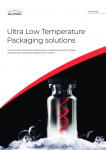Survey: industry leaders looking to shore up pharma supply chain

While the COVID-19 continues to wreak havoc in various industries, the pandemic also has created positive changes and opportunities, according to CEOs polled in a recent executive survey.
EY recently put out its 2022 CEO Survey, which checked in with 2,000 CEOs (including life sciences CEOs) on what they see as key recent developments, current challenges, and future opportunities. Outsourcing-Pharma connected with Arda Ural, EY’s Americas industry markets leader for health sciences and wellness, to learn more about what the survey reveals.
OSP: It’s always a challenging time to be a pharma industry professional—could you please talk about some of the reasons why it’s an especially dynamic time to be in the field now?
AU: Since the widespread onset of COVID-19, the life sciences sector has experienced an extraordinary two years. Industry executives witnessed a significant uptick in new technologies and initiatives: mRNA, virtual clinical trials, accelerated rolling submissions, emergency use FDA approvals, and everything in between.
Now, however, with IPO and SPAC slowdowns, another biopharma patent cliff approaching in the next three years, and the rise of additional new technologies, the coming decade is shaping up to be equally formidable. As the EY Americas Industry Markets Leader for Health Sciences and Wellness, I hear first-hand about clients’ challenges and opportunities. With technologies such as cell and gene therapy, gene editing, and mRNA emerging as viable solution alternatives, it’s an exciting time to be a part of this change.
OSP: Specifically, how has the pandemic caused disruption all along the drug development/manufacturing supply chain?
AU: The COVID-19 pandemic exposed critical acute weaknesses in drug development and manufacturing supply chains, especially focused on hospital medications used in the ICUs. The pandemic especially revealed disruption points in the global pharma supply chain, as most of the API (active product ingredients), interim products, and supplies were procured from outside of the US. Ensuring business continuity, as well as access to acute medicine, both emerged as top supply chain risks in a world grappling with ongoing freight and shipping challenges.
Companies are now analyzing supply chain operations and costs to prepare for structural shifts, such as the re-shoring or onshoring of manufacturing. However, these transformative changes are capital-intensive and time-consuming. There are also other interdependencies to consider, such as tax implications and ongoing geopolitical risks. But decoupling is not easy, and event localized end-to-end manufacturing cannot remove all dependence on externalities, such as internationally supplied raw materials and consumables.
Amidst these shifts, we are helping our clients reimagine their supply chains, shifting from manual, linear systems to agile, networked ecosystems, by utilizing existing and emerging technologies such as blockchain and AI/ML to increase efficiencies.
OSP: Could you please tell us why EY decided to put out this survey—what were you hoping to learn by checking in with these 2,000 CEOs?
AU: After all the disruption of the last two years – and the enormous economic, cultural, and geopolitical shifts – we wanted to take a pulse-check of business leaders across industries. We sought a perspective on these CEOs’ challenges, prospects, and overall sentiments at this unique point in history.
OSP: Did you have any expectations going in?
AU: We frankly did not know what to expect given the highly disruptive period we lived through. However, we expected some of the key themes to be around supply chains, talent, sustainability, and M&A as we are working diligently with our clients on these topics.
OSP: Then, were there any especially surprising findings?
AU: It was striking that more than half (62%) of the 250 life sciences CEOs surveyed said the pandemic had fundamentally reshaped the industry for the better, or had no industry impact, compared to 27% for all other industries CEOs surveyed. This is a true testament to the resiliency of the life sciences sector and its central role in developing, manufacturing, and distributing COVID-19 vaccines and therapeutics in unprecedented record time.
Further, revenue from these products helped life sciences companies build up capital: M&A firepower — defined as the capacity to conduct acquisitions based on the strength of the balance sheet — in the biopharma industry reached nearly $1.2t USD in 2021 for the first time in seven years.
We also found it interesting that the majority of life sciences CEOs felt their companies were either stronger or unchanged in the wake of the pandemic. We know some fared better than others, but to have most feel stable was a comforting sign.
OSP: What did CEOs have to say about current and future supply chain issues, and how they’re working to mitigate/avoid them in the future?
AU: Building supply chain resiliency is key to addressing not just current needs, but also to gain long-term competitive advantages. More than three-quarters (78%) of life sciences CEOs noted their companies have adjusted or are planning to adjust their global operations or supply chains. Within that number, 39% have adjusted their supply chain to reduce logistics costs and uncertainty, and 26% have boosted the number of suppliers to increase resilience.
In this context, CEOs are working diligently to reimagine the future of the supply chain, create new business models, find alliances, and contract development and manufacturing organizations, and utilize AI/ML capabilities to help mitigate any such disruptions in the future. The key is taking the time now to assess their issues and risks, as these changes do not happen overnight.
OSP: How about M&A activity—will the current interest in snapping up other companies continue, or maybe increase?
AU: After a hiatus, we’re seeing M&A returning to historic norms as a strategic tool: 55% of life sciences CEOs say they plan to actively pursue M&A in the next 12 months, up from 43% in 2021. We especially believe that in the aftermath of the biotech sell-off, there will be opportunities for big biopharma companies to deploy their strong balance sheet to acquire top-line revenue and supplement their pipelines. Among the reasons for increased M&A activity, we’re seeing increasing operational capabilities (26% of CEOs), bolt-on acquisitions to increase market share (21%), and strengthening ESG ranking, performance, or sustainability footprint (20%).
OSP: Could you talk about some of the factors respondents view as potential threats to their organizations’ future growth?
AU: While the survey responses skewed mostly positive, there’s still much work to be done for CEOs to get their footing and feel more stable as we transition out of the acute COVID-19 era. For instance, if leaders fail to transform supply chains sooner rather than later, they could be dooming themselves to more disruption and loss of revenue—not to mention, they could be missing out on key alliances and R&D opportunities.
In regard to environmental, social, and governance (ESG), stakeholders and regulators are expecting more and more transparency and a shift towards sustainability. However, less than a third (30%) of life sciences CEOs said becoming a leader in sustainability will be a competitive advantage. Executives need to find ways to link ESG to long-term value creation to help win over investors for the sake of our planet.
Lastly, for M&A, the life sciences deal landscape has been extremely competitive – 61% of CEOs say they failed to complete or canceled a planned acquisition in the past 12 months—and it’s not getting easier. Nearly three-thirds (74%) of CEOs say they expect an increase in hostile and competitive bidding in the next 12 months and 75% expect private equity to be a major acquirer in the sector. Given this news, executives should consider alliances and other strategic partnerships to offset these concerns.
OSP: Do you have anything to add?
AU: The life sciences industry, relatively speaking, is in a position of strength compared with others. It can use this to its advantage, in the form of both financial firepower and strategic action, to turn immediate needs such as supply chain restructuring and sustainability initiatives into long-term value generators.
By addressing key strategic issues through acquisitions and alliances and making the right internal investments now to overhaul certain functions, CEOs can provide long-term value to their stakeholders and will be better prepared for future challenges.
















